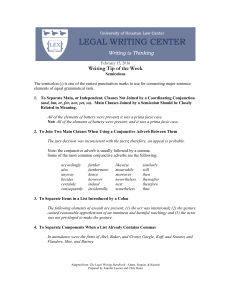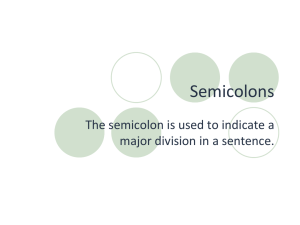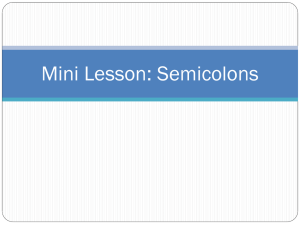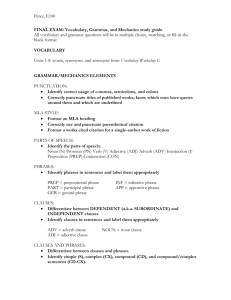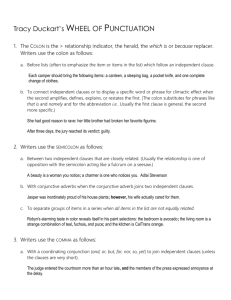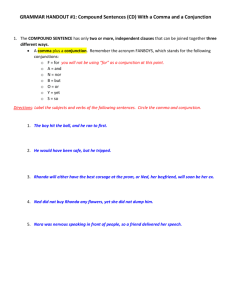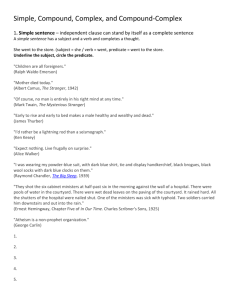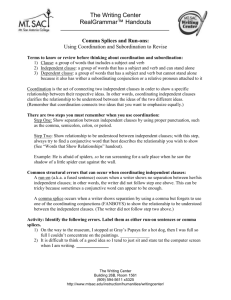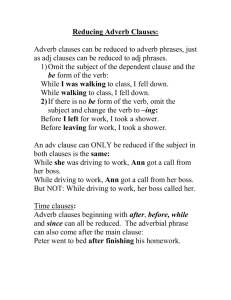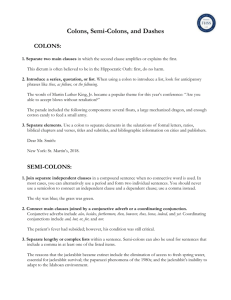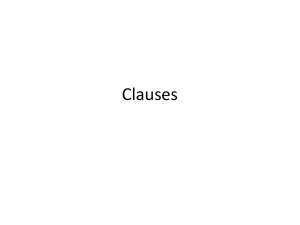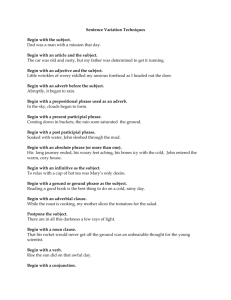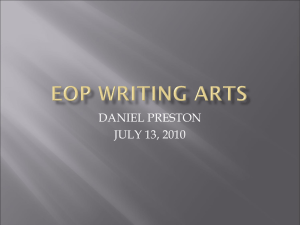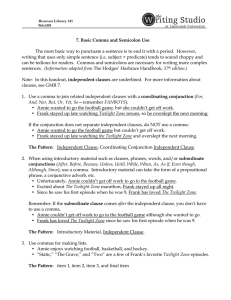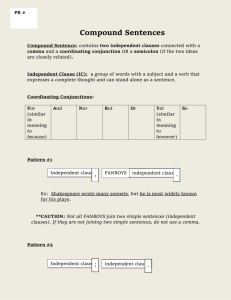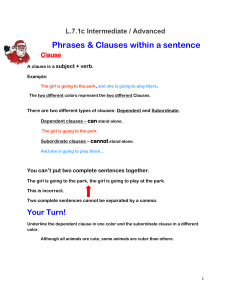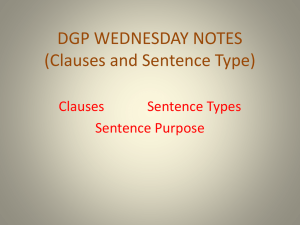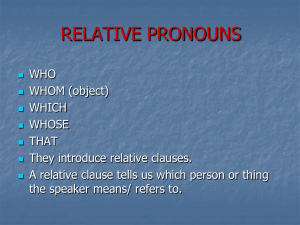Semicolons
advertisement
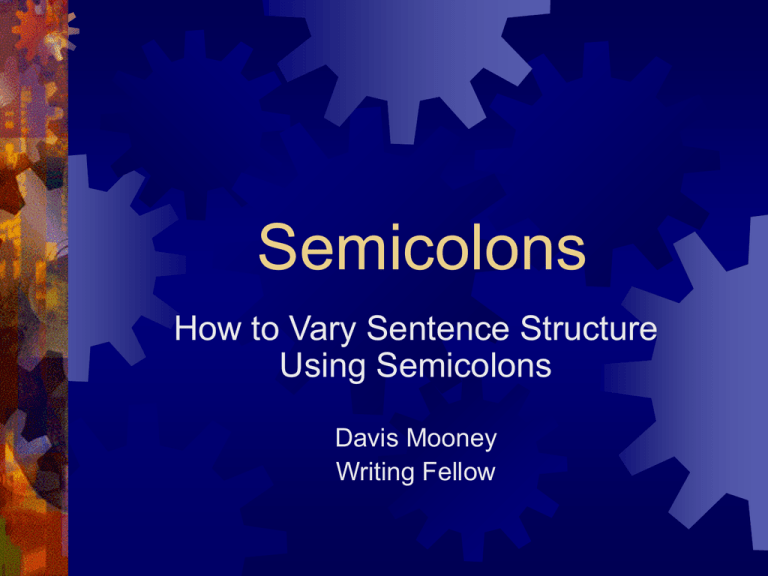
Semicolons How to Vary Sentence Structure Using Semicolons Davis Mooney Writing Fellow To Join Two Independent Clauses Use a semicolon to join two main clauses not joined by a coordinating conjunction. Coordinating Conjunctions: and, but, for, or, nor, so, yet Structure: main clause ; main clause . Example: “Management is doing things right; leadership is doing the right things.” –Peter Drucker To Join Two Independent Clauses Linked by a Conjunctive Adverb Use a semicolon to join two main clauses linked by a conjunctive adverb. Structure: main clause ; conjunctive adverb , main clause . Common Conjunctive Adverbs: therefore, moreover, thus, consequently, however, also Example: “Science in the modern world has many uses; however, its chief use is to provide long words to cover the errors of the rich.” –G.K. Chesterton To Join Two Independent Clauses Linked by a Transitional Phrase Use a semicolon to join two main clauses linked by a transitional phrase. Structure: main clause ; transitional phrase , main clause . Common Transitional Phrases: in fact, even so, for instance, as a result, on the other hand Example: “Words rarely express the true meaning; in fact, they tend to hide it.”-Herman Hesse To Separate Items in a Series that Contain Internal Punctuation Use a semicolon to organize a complex series A complex series is a series containing commas within the series. Structure: main clause , item in a series ; item in a series ; item in a series . Example: As part of their North American tour, U2 will be visiting Los Angeles, California; Baltimore, Maryland; Atlanta, Georgia; and Raleigh, North Carolina. Review Use a semicolon to: - Join two independent clauses, - Join two independent clauses linked by a conjunctive adverb, - Join two independent clauses linked by a transitional phrase, - Or to separate items in a complex series
